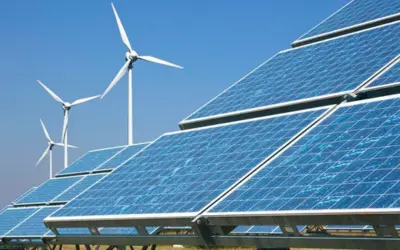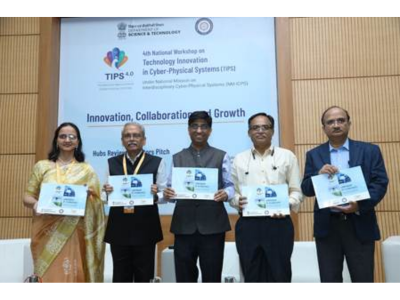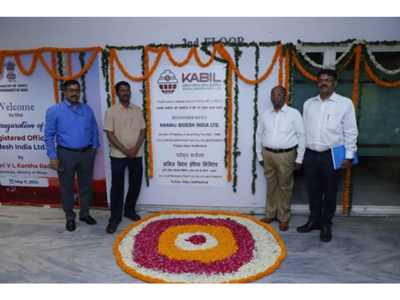Table of Contents
ToggleBlueprint for U.S.-India Collaboration on Secure and Sustainable Global Clean Energy Networks
The United States and India are steadfast in their commitment to deepening collaboration on shared national and economic security issues. As a key component of our economic growth strategies, we are dedicated to jointly harnessing the benefits of the clean energy transition. This includes creating high-quality jobs, accelerating global clean energy deployment, and achieving global climate goals.
To support these objectives, the United States and India plan to enhance and expand bilateral technical, financial, and policy support. This will boost complementary manufacturing capacities for clean energy technologies and components in both countries and lay the foundation for increased cooperation in third countries, particularly in Africa.
This initiative builds on existing clean energy cooperation, including initiatives launched during Prime Minister Modi’s 2023 visit to the United States, the Strategic Clean Energy Partnership led by the U.S. Department of Energy and Indian ministries, technical assistance from U.S. laboratories, and innovative financial platforms like the Payment Security Mechanism for electric buses in India.
A U.S.-India partnership focused on establishing a resilient, cutting-edge techno-industrial base for innovative clean energy manufacturing sets a strong global example and positions our countries to lead in clean economic development in the 21st century.
To kickstart this partnership, the United States and India are collaborating to secure USD $1 billion in new multilateral financing through the International Bank for Reconstruction and Development (IBRD). This funding aims to boost India’s domestic clean energy supply chain, supporting the expansion of manufacturing capacity in key technology sectors such as solar, wind, battery, energy grid systems, and high-efficiency air conditioners and ceiling fans.
Over time, we plan to attract additional financing to priority clean energy manufacturing sectors, leveraging public and private financial tools and pioneering innovative financial vehicles to meet the growing demand for flexible climate finance solutions.
The United States and India will work with relevant government agencies, civil society, private sectors in both countries, philanthropies, and multilateral development banks to identify a package of pilot projects across the clean energy value chain. These projects will meet our eligibility criteria and significantly contribute to supply chain expansion and diversification in targeted sectors. The U.S. and Indian governments also commit to collaborating with industry leaders on the following initiatives to launch and eventually scale this new partnership:
- Identifying near-term investment opportunities to expand manufacturing capacity for specific clean energy supply chain segments, initially focusing on the following components:
- Solar wafers and wafer manufacturing equipment & next-generation solar cells
- Wind turbine nacelle components
- Power transmission line components, including conductors, cabling, transformers, and next-generation technologies
- Energy storage components, including batteries
- Battery packs for 2- and 3-wheel electric vehicles (EVs) and zero-emission e-bus and truck components
- High-efficiency air conditioners and ceiling fan components
Collaborating with the private sector, the United States and India aim to identify eligible opportunities within the specified supply chain segments and support an initial package of pilot projects, ideally including one focused on clean energy deployment in Africa. Over time, additional investment plans and funding sources will be developed.
This initiative builds on private sector partnerships facilitated by the U.S. Development Finance Corporation (DFC) across the solar, wind, battery, and critical minerals sectors, pursuing opportunities to finance the manufacture of clean energy components.
Investments may align with India’s Green Transition Fund, which supports renewable energy, storage, and e-mobility investments in India, and Eversource Capital’s new DFC-supported $900 million fund for clean technologies such as renewable energy, efficient cooling, and electric transportation.
Building trilateral relationships with African partners committed to clean energy deployment, the United States and India will focus on solar and battery storage opportunities. By working multilaterally with African partners, they aim to pursue high-potential solar and EV deployment projects, understand the conditions required for success, detail partnerships and financial models, and implement the projects.
The United States plans to collaborate with Indian companies to explore investment opportunities, facilitate public-private matchmaking, and expand partnerships with local African manufacturers. DFC and the U.S. Agency for International Development will anchor this effort by collaborating with the India-based International Solar Alliance to deploy solar and EV charging networks near health facilities.
The United States and India will also consult with industry to develop policies that strengthen demand certainty for locally manufactured clean technologies. The U.S. Bipartisan Infrastructure Law and Inflation Reduction Act are historic laws designed to invest in large-scale clean energy deployment while reinvigorating U.S. manufacturing capacity to onshore clean energy supply chains.
Similarly, India’s Production Linked Incentive Schemes have invested over $4.5 billion to catalyze clean energy manufacturing. However, additional policies are essential to expand and protect these investments amid global market dynamics and thin profit margins. Both countries recognize the importance of sharing insights on designing policy frameworks to reduce demand uncertainties and ensure the availability and security of input materials, technological expertise, finance, and other manufacturing enablers.
This roadmap serves as a short-term mechanism to drive initial cooperation on projects and inform a long-term roadmap, including establishing a cadence of meetings and milestones for this partnership. It is not intended to create rights or obligations under domestic or international law.
The production of critical minerals is geographically concentrated, raising concerns about supply security. Currently, the Democratic Republic of Congo supplies 70% of the world’s cobalt, while China provides 60% of rare earth elements (REEs) and Indonesia 40% of nickel. Australia accounts for 55% of global lithium mining, and Chile for 25%.
The processing of these minerals is also highly concentrated, with China responsible for refining 90% of REEs and 60-70% of lithium and cobalt. Additionally, China dominates the supply of bulk materials, producing around half of the world’s crude steel, cement, and aluminum, although most of this output is used domestically.
China is the leading global supplier of clean energy technologies today and a net exporter for many of them. China holds at least 60% of the world’s manufacturing capacity for most mass-manufactured technologies (e.g. solar PV, wind systems and batteries), and 40% of electrolyser manufacturing.
Europe is generally a net importer, with the exception of wind turbine components; about one-quarter of electric cars and batteries, and nearly all solar PV modules and fuel cells are imported, mostly from China. For solar PV, China supplies equipment directly to all markets except North America. The United States imports two-thirds of its PV modules, primarily from Southeast Asia, where Chinese companies have been actively investing.
Covid-19 pandemic and Russia’s invasion of Ukraine, coupled with rapidly growing demand, have significantly increased the cost of materials and energy. The average price of lithium in 2022 was nearly four times higher than in 2019, while cobalt and nickel prices doubled.
Early 2022 saw battery metal price hikes, leading to a nearly 10% global increase in battery prices compared to 2021, reversing years of continuous decline. The prices of solar PV-grade polysilicon, copper, and steel roughly doubled between the first half of 2020 and the first half of 2022. These increases contributed to a 25% rise in the price of PV modules and up to a 20% increase in the price of wind turbines outside China.
Clean energy technologies have significantly lower life-cycle CO2 intensities compared to fossil fuels, but their supply chains still contribute notably to CO2 emissions and other pollutants. Material production and technology manufacturing typically account for over 90% of the emissions in the clean energy technology supply chains analyzed.
Reducing emissions from these stages is challenging due to the current lack of commercially available low-emission technologies in many cases. However, addressing these emissions is crucial for the transition to net zero emissions.
The global market for clean energy materials is projected to grow exponentially in the coming decades, with some materials expected to see a 400% increase and others, like lithium and graphite used in electric vehicle batteries, surging by up to 4,000%. However, a small number of countries dominate the reserves, processing operations, and production facilities for these critical components. Additionally, human rights and environmental conditions at many of these overseas operations often fall short of U.S. and international sustainability standards.
The manufacturing supply chain for clean energy technologies is complex, involving a vast global network of materials procurement, processing, production, recovery, infrastructure, and logistics. Recent events have highlighted vulnerabilities in these supply chains, affecting not only energy but also consumer goods, construction materials, and other products.
These challenges were particularly evident during the COVID-19 pandemic. For instance, semiconductor shortages severely impacted U.S. auto production, leading to fewer vehicles being produced, which in turn negatively affected business profits, hiring patterns, and car prices.
The new DOE supply chain initiatives, along with NREL’s extensive research, aim to minimize risks associated with expanding the U.S. clean energy market share and maximize benefits for as many Americans as possible. Enhancing U.S. materials production and manufacturing capacity will safeguard the clean energy industry from supply chain disruptions and their cascading effects on businesses, workers, and consumers.
“The U.S. has excelled in investing in innovation. Now, it’s time to put the same effort into bringing these American innovations to market to meet the anticipated growth in demand for clean energy,” said Igogo, the acting lead supply chain coordinator for the DOE Office of Policy. “This begins with increasing support for technology demonstration, deployment, and manufacturing. The passage of the BIL, IRA, and CHIPS Act are significant steps, providing policy tools to move the U.S. in that direction.”
Additionally, the DOE is committed to reversing the long-standing global legacy of energy-related development’s disproportionate impact on underserved communities.
“We must ensure that no one is left behind in the clean energy transition,” Igogo emphasized. “This means considering the social, economic, and environmental impacts on underserved communities at every link of the supply chain, both within the U.S. and beyond its borders.”
Mapping Strategies To Kick-Start U.S. Manufacturing
Igogo led the development of recent clean energy supply chain studies and authored the DOE strategy report based on findings from NREL researchers and others. The report identifies seven key areas to enhance supply chain resilience and outlines 62 policy actions requiring coordination from communities, government, and industry.
Key strategies in the report include:
- Increasing the availability of critical materials
- Expanding domestic manufacturing capacity
- Developing a skilled workforce
- Cultivating diverse, reliable, and socially responsible global supply chains
The studies also explore recycling and material recovery strategies to support domestic supply chains while minimizing their carbon footprint. These policy recommendations are based on detailed analysis, expert dialogue, and public comments collected by the DOE.
Engel-Cox, who coordinated the laboratory activity on the reports led by NREL authors, emphasized that the deep-dive supply chain reports do not endorse any specific policy approach. Instead, they provide the data and neutral analysis needed for informed policy decisions by DOE officials and others.
The DOE deep-dive reports analyze challenges and opportunities related to specific technologies and crosscutting topics. NREL-led reports examined supply chains for solar PV, wind power, energy storage, semiconductors, and fuel cell and electrolyzer technologies. These reports cover supply chain stages from materials extraction to decommissioning and consider the impact of trade policies, tax incentives, and financing options. They also explore how research and innovation could strengthen supply chains.
NREL researchers contributed to the report on platinum group metals, with each report involving collaboration with experts from national laboratories, industry, and government agencies.
Taking a Full-System Approach To Greening the Supply Chain
Most global manufacturing, including clean energy technology production, relies on fossil fuels. NREL’s extensive research focuses on understanding the current supply chain’s implications and anticipating future needs and challenges.
A significant part of this research aims to develop a circular economy for clean energy. This involves extending the lifespan of materials, components, and products, reducing waste, conserving resources, and boosting efficiency. Ultimately, this approach seeks to manufacture goods that use fewer raw materials and energy, last longer, and avoid landfills through reuse and recycling.



